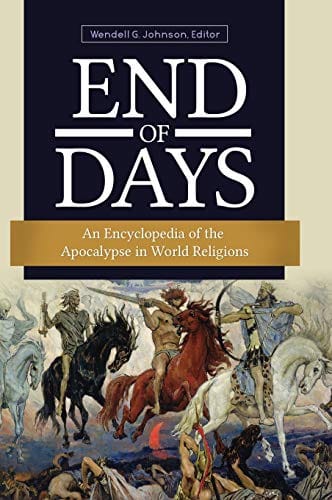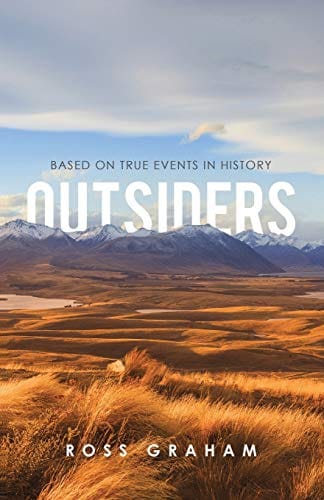End of Days: What It Means and Why It Captivates Us
Discover religious, scientific, and cultural perspectives on the End of Days and find practical tips for resilience in uncertain times.

Introduction: A Timeless Fascination
From ancient scrolls to blockbuster movies, the phrase “End of Days” has gripped human imagination for millennia. Whether framed as divine judgment, cosmic catastrophe, or climatic collapse, visions of finality speak to our deepest fears and hopes. Exploring why the concept endures not only satisfies curiosity; it also reveals how cultures interpret uncertainty, morality, and the future. This article unpacks religious prophecies, scientific models, pop-culture narratives, psychological effects, and practical steps for resilience, offering a balanced look at a topic that refuses to fade away.
Religious Roots of the End Times
Nearly every major faith tradition offers an eschatology—a theological roadmap describing how history will conclude. In Christian scripture, the Book of Revelation presents vivid symbols such as the Four Horsemen, the Beast, and the New Jerusalem. Judaism anticipates the advent of the Messiah and the Olam Ha-Ba, or World to Come. Islamic sources speak of the Day of Judgment, when the Mahdi and Isa (Jesus) defeat evil before a grand reckoning. Hinduism foresees the Kalki avatar ushering in the Satya Yuga, while Buddhism predicts the arrival of Maitreya after moral decline peaks. Although details differ, these narratives share core themes of moral accountability, cosmic renewal, and ultimate justice.
Scientific Perspectives on Global Catastrophe
Outside theology, the End of Days is often framed through empirical risk assessments. Astrophysicists calculate asteroid impact probabilities using Near-Earth Object surveys, and organizations like NASA’s Planetary Defense Coordination Office actively track threats. Climate scientists warn that unchecked greenhouse-gas emissions could trigger tipping points—from runaway ice-sheet collapse to irreversible coral bleaching—that destabilize civilization. Epidemiologists model pandemics that could dwarf COVID-19 in lethality, while nuclear strategists analyze the cascading effects of atomic conflict and winter. Though steeped in data rather than prophecy, these scenarios likewise highlight humanity’s vulnerability and the urgency of collective action.
Pop Culture Keeps the Apocalypse Alive
Film franchises, television series, novels, and video games have translated abstract doom into gripping stories. Titles like “Mad Max,” “The Walking Dead,” and “The Last of Us” depict harsh post-apocalyptic worlds where resource scarcity tests morality. Young-adult sagas such as “The Hunger Games” and “Divergent” layer dystopian futures with coming-of-age themes, making existential dread relatable to new generations. These depictions both mirror and shape public anxieties: environmental degradation appears as deserts, viral outbreaks spawn zombies, and authoritarian politics manifest as oppressive regimes. By dramatizing collapse, pop culture allows audiences to rehearse survival and ethical choices from the safety of their couches.
The Psychology of Apocalypse Thinking
Why do end-times narratives resonate so strongly? Psychologists point to a phenomenon called “existential anxiety,” the tension arising from awareness of mortality. Catastrophic stories externalize that anxiety, offering clear villains and heroic arcs that everyday life rarely provides. Moreover, apocalyptic frameworks simplify complex social problems, turning them into singular threats with definitive solutions. During periods of rapid change—economic recessions, technological disruption, pandemics—interest in doomsday prophecies spikes, providing a form of cognitive closure. However, excessive fixation can morph into eco-anxiety or prepper paranoia, underscoring the need for balanced information and mental-health awareness.
Preparing Without Panic
The prospect of large-scale disaster is not purely abstract. Practical preparedness can save lives, yet it need not drift into fatalism. Emergency agencies advise keeping a 72-hour supply of food, water, medications, and communication tools. Community resilience—knowing neighbors, learning first aid, participating in local planning—often proves more valuable than individual stockpiles. On a broader level, supporting science-based policies on climate mitigation, pandemic response, and nuclear non-proliferation reduces systemic risk. Preparation, when grounded in realism rather than fear, empowers citizens and fosters social cohesion.
Hope and Renewal in End-Times Narratives
Not all End of Days stories culminate in utter devastation. Many faith traditions end with paradise restored, while secular tales frequently highlight rebirth. The phoenix-like cycle of destruction and renewal reflects ecological principles: forest fires clear underbrush, enabling new growth; mass extinction events pave the way for evolutionary leaps. Recognizing this pattern encourages optimism without denying hardship. It reframes crisis as a catalyst for innovation—green energy revolutions, global health initiatives, and technological breakthroughs that may avert the very catastrophes predicted.
Ethical Choices in the Shadow of the End
Imagining the world’s final chapter forces a reckoning with present-day ethics. Should we prioritize short-term gains or long-term stewardship? Do nations hoard resources or share them equitably to ensure collective survival? Philosopher Hans Jonas proposed the “imperative of responsibility,” arguing that when human power threatens planetary future, our moral duties expand to unborn generations. In practical terms, this could mean supporting sustainable agriculture, investing in renewable energy, and advocating for global justice. The End of Days, real or not, becomes a moral lens that sharpens our view of today’s decisions.
Conclusion: Embracing Uncertainty with Purpose
The allure of the End of Days lies in its power to compress vast uncertainties into vivid narratives. Whether told through sacred scripture, computer models, or cinematic universes, these stories challenge us to confront fear, cultivate resilience, and act ethically. While no prophecy or prediction offers absolute certainty, the questions they raise—about meaning, responsibility, and hope—remain undeniably relevant. By engaging thoughtfully with end-times ideas, we can transform anxiety into agency, ensuring that whatever tomorrow brings, humanity meets it with wisdom and courage.



